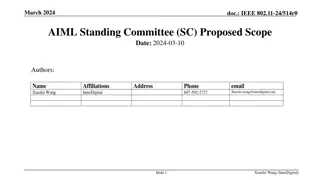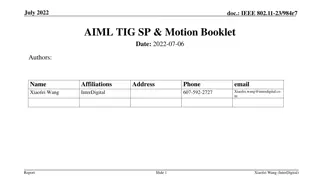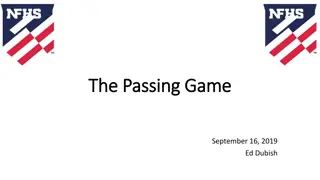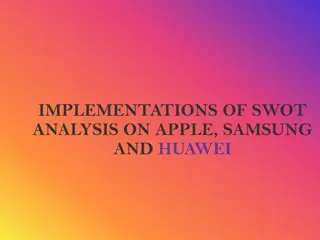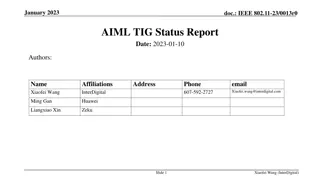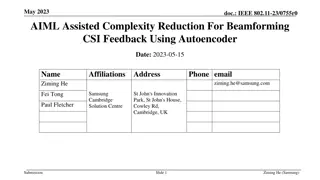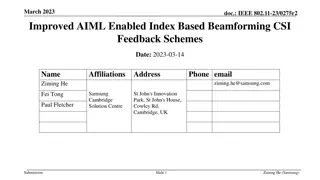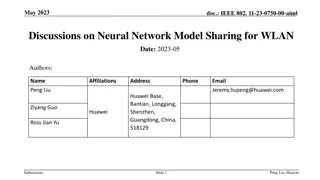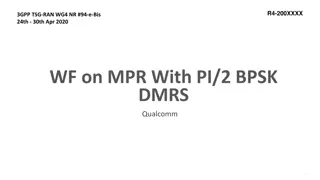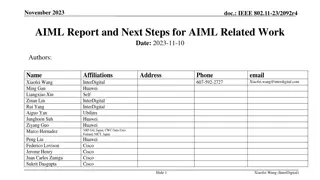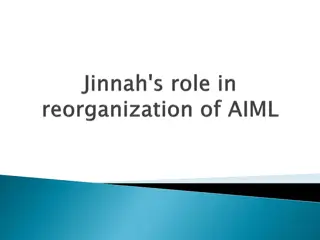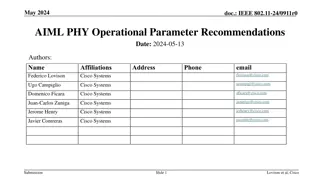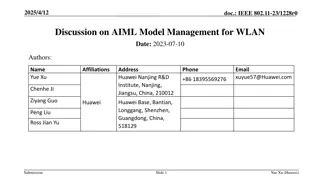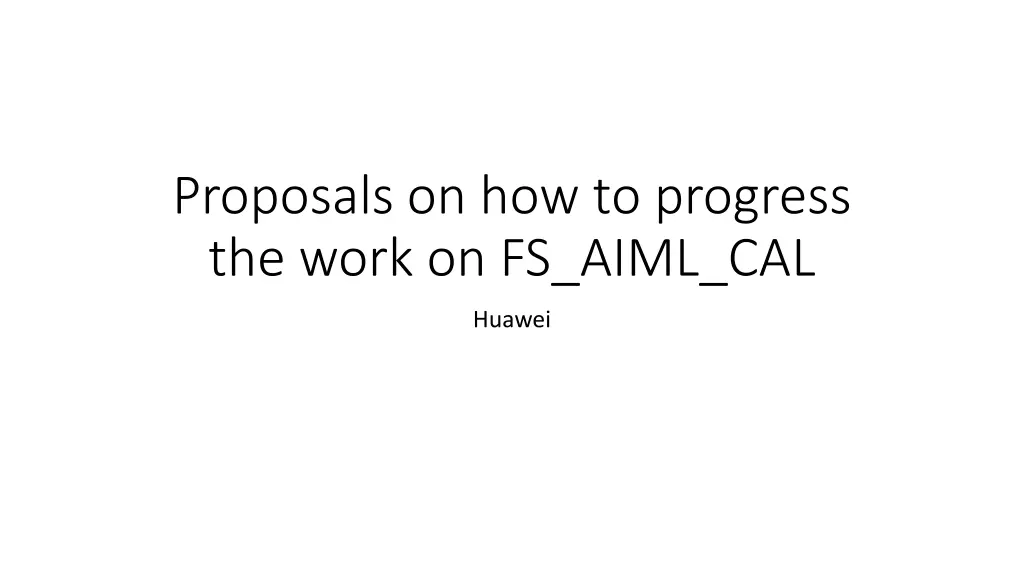
Progressing Work on FS_AIML_CAL Huawei: Proposals & Principles
Explore proposals and principles for advancing work on FS_AIML_CAL by addressing phases, principles to guide the study, and proposals for efficient communication and coordination with working groups. Key topics include phases progress, principles for study, proposals to settle work, and categorization of differences in definitions.
Download Presentation

Please find below an Image/Link to download the presentation.
The content on the website is provided AS IS for your information and personal use only. It may not be sold, licensed, or shared on other websites without obtaining consent from the author. If you encounter any issues during the download, it is possible that the publisher has removed the file from their server.
You are allowed to download the files provided on this website for personal or commercial use, subject to the condition that they are used lawfully. All files are the property of their respective owners.
The content on the website is provided AS IS for your information and personal use only. It may not be sold, licensed, or shared on other websites without obtaining consent from the author.
E N D
Presentation Transcript
Proposals on how to progress the work on FS_AIML_CAL Huawei
FS_AIML_CAL Phases & Open Issues Phase 1 (completed) SID/scope discussion, setup of TR 22.850 Phase 2 (ongoing) Collect material from WGs Analyze differences between WG definitons, discuss alignments/improvements/corrections Continuously update TR 22.850 with changes from WGs 1. how long should changes from WGs be incorporated? 2. Which findings justify communication with WGs? Phase 3 (upcoming) Inform WGs about findings 3. When to start to inform affected WGs?
Principles Study should not put additional workload on WGs regarding ongoing Work Items, besides minor corrections that can be done in a simple CR. Study should not interfere with the technical work within the WGs, but should only strive to align definitions and terminology. Obvisouly, if possible technical problems are identified, those should be communicated, but it is up to the WGs to resolve them. TR should include complete list of all WGs that would need to be contacted and should also list the issues concerning each WG, before any communication with WGs. This guarantees a complete picture of the work that needs to be done and also
Proposals Proposal 1: Stop including changes from WGs from June onwards. TR 22.850 includes all major definitions (i.e. those which could cause problems if defined differentlcy) already now Further changes in the WGs to those definitions will occur over the upcoming months, but in order to settle the work and to do a solid analysis, the collection of new/changed material should be stopped at June 2025 TSG SA. Proposal 2: Do not contact WGs before TR has not been completed TR 22.850 should be completed before any communication with WGs is started. Only that way it can be guaranteed that the material is stable and all possible dependencies have been analyzed and taken into account. A realistic goal seems to be to complete the TR in September 2025 Proposal 3: TR 22.850 to include list of items that will trigger LS s This list should also include the WGs that need to be contacted This would guarantee that the decision on which items to communicate to WGs is made before the LS s are set up Proposal 4: LS s to WGs should only raise the differences, but not mandate changes The LS s to the WGs should include the differenct definitions and possible suggestings for resolving them The LS s should not mandate the WGs to come up with related changes, but make them aware of the possible discrepancies and allow them to work on them in the manner they see fit, possibly also triggering additional communication between WGs.
Proposal 5: Categories of Differences Each analysis of different defintiions should result in one of the following categories: C Contradicting definitions N Not identical, but non-contradicting definitions O Overlapping, but not identical and non-contradicting definitions I Identical definitions N/A No applicabale, e.g. if a specific definition is not relevant for a WG Decision to be taken latest during June plenary: which of the above categories would justify that SA sends LS to the affected WGs? Huawei thinks that only category C (Contradicting definitions) should trigger LS s.


